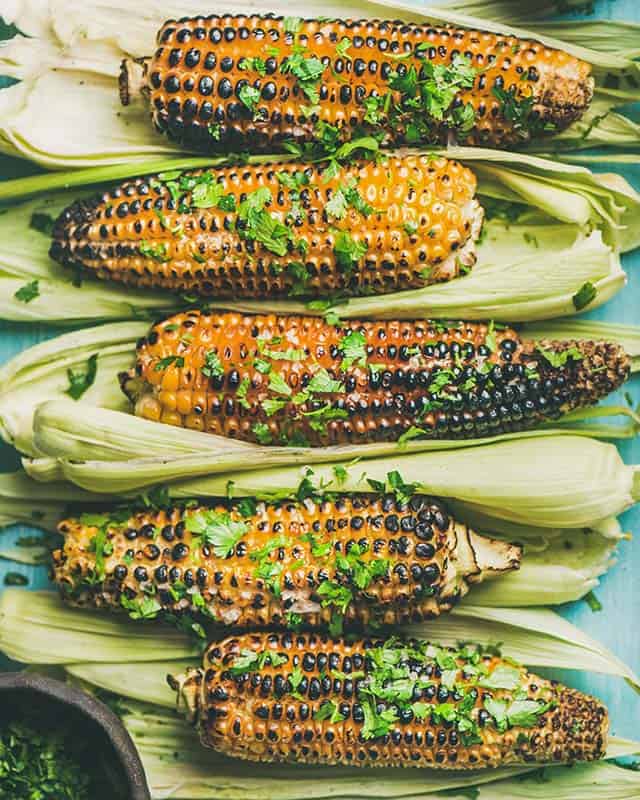Grilling Corn on the Cob
Fresh corn grills beautifully, especially when the heat caramelizes the kernels instead of steaming them. Take a peek a few different methods for grilling corn:
- Keep the husks on and place them directly on the grill
- Husk and wrap them in aluminum foil with butter and honey
- Soak them in water prior to placing directly on the grill
- Husk them fully, coat them lightly in oil or butter, and place them directly on the grill. Just make sure you turn them frequently!
Grilling Asparagus
Asparagus is a favorite and so easy! Just Snap off the bottom end, marinate in olive oil, and add a little salt and/or lemon zest.
Tasty tip: cook for 4 minutes on the grill, turning once, and they’re done.

Yams and Sweet Potatoes
Cut them into 3/8-inch slices, skewer and place on the grill for about 10 minutes.
Tasty tip: don’t worry about how dark they get on the outside, you can always peel off the outer layer with a fork. You want to make sure they are thoroughly cooked so you don’t end up with a hard, raw core.
Red Peppers
Stem and seed them, then cut into julienne strips. Marinate these in oil and then place on a very hot grill using a grilling basket or skewers and let the skin blacken just a bit.
Eggplant
Cut the eggplant crosswise into slices that are at least 1/2-inch thick; marinate with your favorite oil; then grill for about 12 minutes per side.
Tasty tip: Eggplant is high in water content, make sure you leave enough skin and flesh on it.
Radicchio
Slice it into length-wise quarters, apply the usual oil/salt marinade, and grill for about 5 minutes per side.
Tasty tip: the slight charring along with the purplish-red color of the leaves looks gorgeous.
Nothing is worse than watching an expertly grilled onion browned on the edges and perfectly caramelized fall through the grill and land in a pile of ash. There are three or four good methods for keeping your veggies above the flames instead of in them.
- Buy a hinged grilling basket. You can find them in just about any kitchen accessory store, and there are plenty online as well. One real advantage to these baskets is that they are not being used to cook meat, so they tend to stay much cleaner than your regular grill top.
- Set wire cooling racks perpendicular to the direction of your regular grill surface. By “cross-hatching” these, you reduce the hole space and can keep those veggies from taking a dive. Be sure to spray or oil your racks before using them, and to clean them off promptly when done.
- Wooden skewers are cheap and can be protected from the heat by soaking them before use. Metal skewers also work great, but conduct the heat and handle with tongs or oven mitts. Of course, getting the vegetables to stay on the skewers is no easy task. Skewers work well with peppers, mushrooms, small potatoes (like Yukon golds), zucchini or summer squash, and some onions. Don’t use skewers with cherry tomatoes or asparagus. It won’t end well.

 VIEW ALL
VIEW ALL



